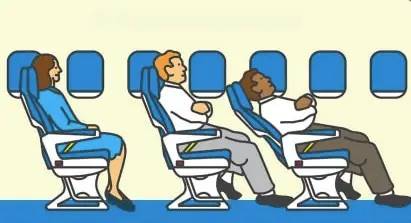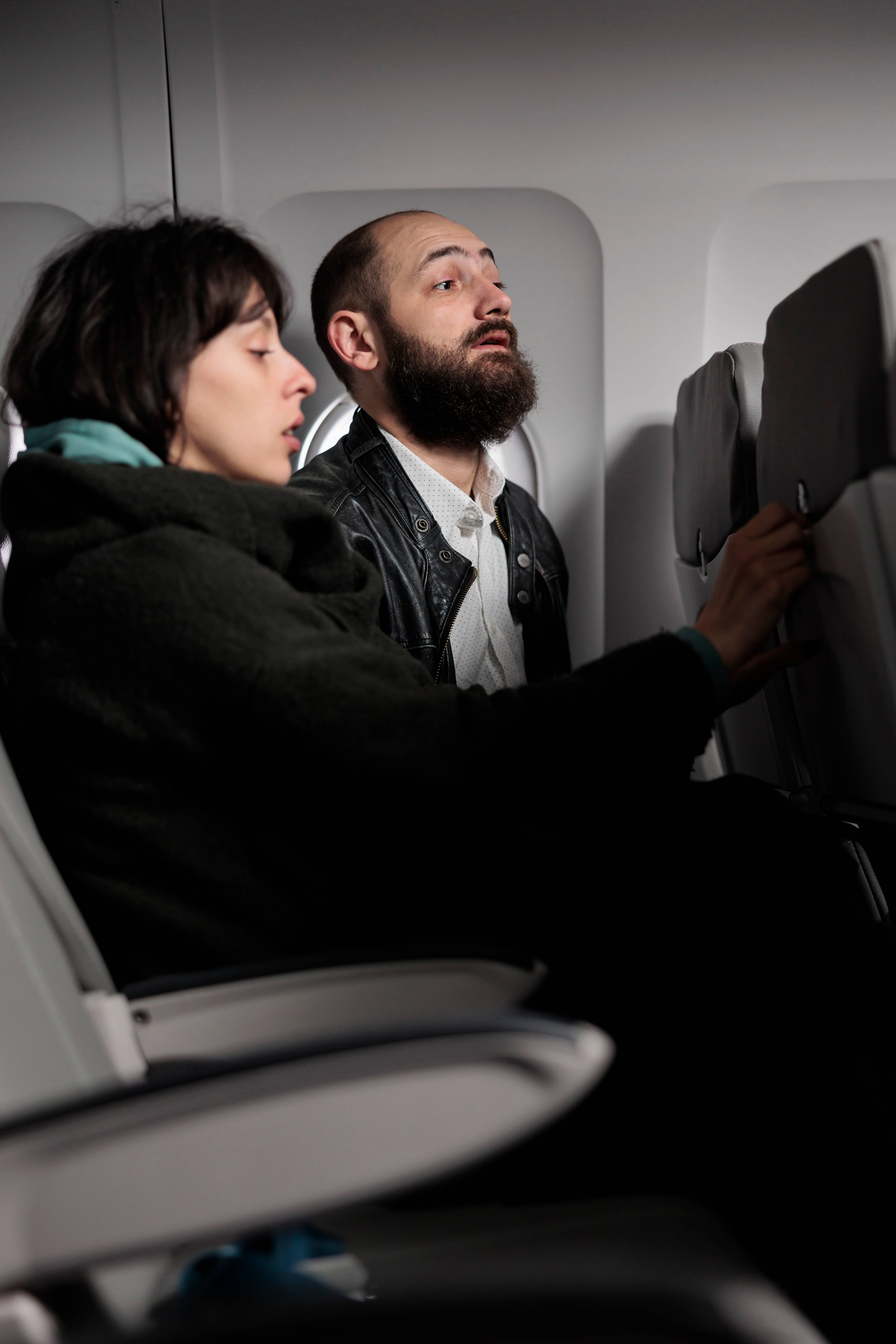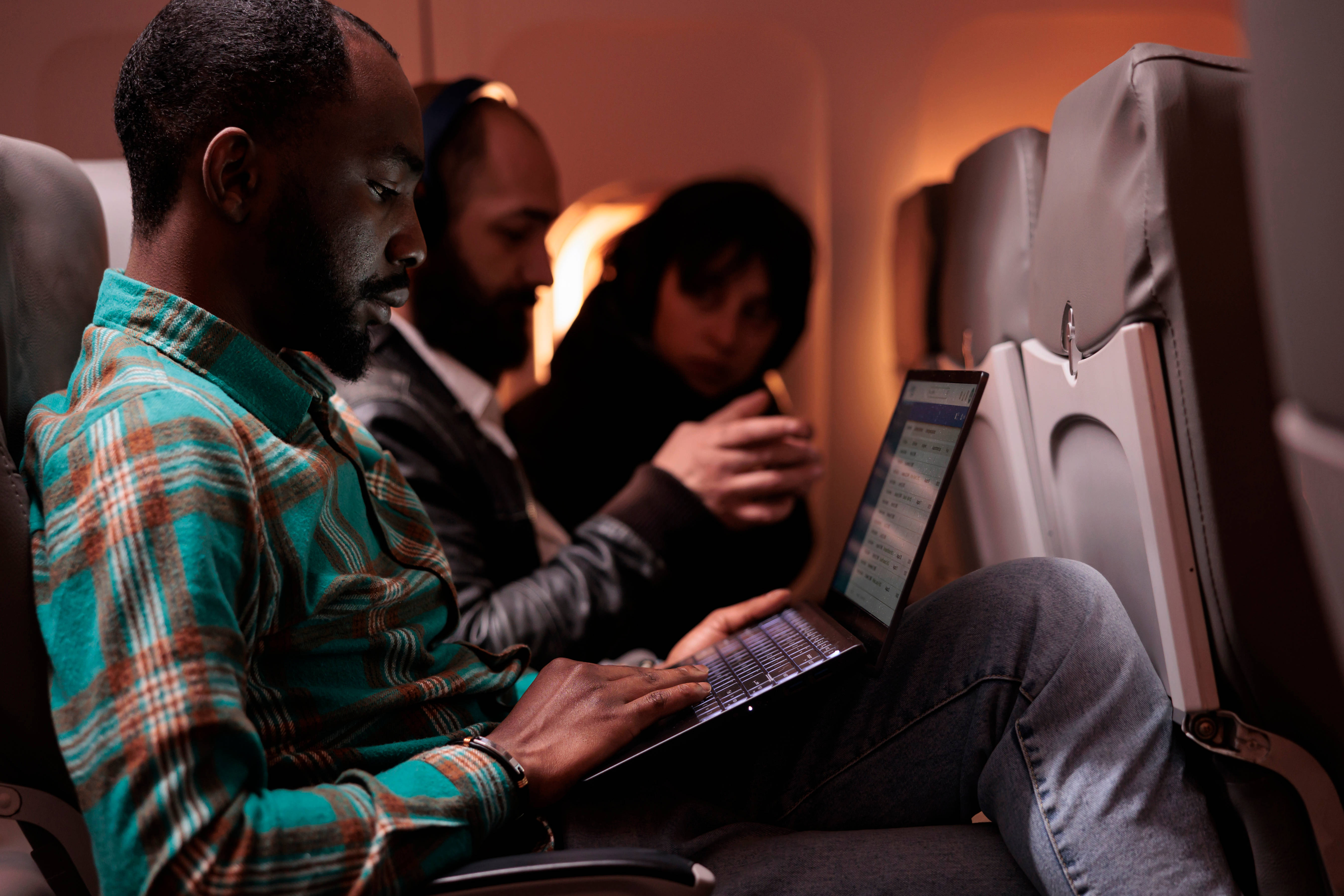Lean or Not to Lean…The Great Airplane Seat Debate
During a conversation with a seasoned airline pilot who was next to me in a coach seat, whom we’ll refer to as "Pilot Pete," I gained some fascinating perspectives into the ongoing debate over whether passengers should lean their airplane seats back during flights. With years of experience in the cockpit and exchanging stories with flight crews, Pilot Pete has witnessed firsthand the various dynamics at play when passengers choose to recline—or not to recline—their seats.
Pilot Pete shared that, although he rarely finds himself seated in the economy section, when he does, there’s one thing that really bothers him: when the person in front of him leans their airplane seat all the way back. He admitted that he rarely reclines his own seat, and when he does, it’s a minimal adjustment he refers to as the “press-n-tap” technique. According to Pete, this involves pressing the recline button and tapping back lightly, accepting whatever small recline he gets without disturbing the person behind him. This compromise, he believes, is a small gesture of courtesy.
But Pete also acknowledges that passengers have the right to lean back if they choose. “If you’re the type who loves to lean back, you’ve got every right to do so,” he said. However, he also provided some insider knowledge on what the crew is thinking when they instruct passengers to “sit back, relax, and enjoy your flight.”
According to Pete, the crew often hopes that passengers won’t fully “sit back”—at least not immediately. The primary reason for this is what Pete calls “passenger harmony.” As Pete explained, “We don’t expect everyone to be holding hands and singing Kumbaya, but keeping things calm and courteous up there is crucial. Post 9/11, we’re all hyper-aware of passenger behavior—some might say overly cautious, but I’d rather be safe than sorry.” He’s seen too many instances of “seat recline rage,” and it’s not something anyone wants to deal with during a flight.
READ: Best ways to get bin space - a flight attendant's perspective
Pete also highlighted the importance of following crew instructions, particularly when it comes to preparing for landing. “We’ll ask you twice to raise your seat—yes, twice,” he said with a knowing smile. The first time is when the plane is nearing landing, and the crew politely asks passengers to “return your tray tables and seatbacks to their full upright position.” According to Pete, some passengers comply immediately, while others don’t—prompting the need for a second reminder during the final safety check. “And if someone’s asleep, waking them up to adjust their seat is a whole other can of worms,” Pete added.
VIDEO:Have you ever been on a flight where a fellow passenger's behavior made the journey less enjoyable? You're not alone. I recently watched this insightful video on airplane etiquette, and it completely transformed my flying experience. From handling seat recline disputes to maintaining good hygiene, this video covers all the unspoken rules that can help ensure a peaceful and pleasant flight for everyone. Trust me, these tips are game-changers! Click play to discover how you can be a more considerate traveler and make your next flight smoother for yourself and those around you.
During my probing 'interview', Pete recounted several experiences where seat reclining led to some serious conflicts. One story stood out: “I’ve seen passengers get irate when someone leans their seat back too quickly or too far,” he recalled. One incident was particularly memorable—when a passenger slammed their seat back so hard that it sent a cup of hot coffee flying onto the tray of the person behind them, soaking their tablet and ruining what appeared to be a critical report. “Trust me,” Pete said, shaking his head, “that flight did not end well.”
READ: Flying & Nutrition from a Pro Traveler & Health Nut
Throughout our conversation, Pete offered his observations on the various “leaning styles” he’s noticed among passengers. While sitting on the jumpseat, Pete has categorized these styles into four distinct types:
The “What Kind of Leaner are You” Quiz
According to Pilot Pete, passengers generally fall into one of the following categories:
A. The F.A.T. Leaner (Fear and Trepidation): This passenger feels so guilty about reclining that they’ll sit completely upright for an entire flight, even from New York to Sydney. They might joke that their recent spine surgery went well, but deep down, they’re concerned about the comfort of the person behind them.
B. The Stealth Leaner: This passenger inches back their seat slowly, hoping the person behind them won’t notice. They might adjust their seat incrementally, trying to gauge the reaction (or lack thereof) from the passenger behind.
C. The Wimbledon Leaner: This passenger constantly moves their seat back and forth—recline, then upright, recline, then upright—throughout the flight. Pete likens this to watching a tennis match, with the person behind them never quite sure what to expect next.
D. The Shock and Awe Leaner: This passenger reclines their seat with full force, usually during the beverage service, creating a knee-crushing, drink-spilling, paper-fluttering disaster. And they don’t even care.
After explaining these categories, Pete offered some advice for passengers looking to be more considerate onboard. He believes there are a few simple universal rules for contributing to “passenger harmony”:
Onboard Seat Leaning for Dummies
- Look at seat maps and learn which airlines or aircraft types have the best seat pitch. For longer flights, try to choose those.
- You have a right to lean back, so let go of the guilt! But always be polite
- Ask first. Then… lean SLOWLY.
- Be reasonable. If the person behind you is tall, pregnant, holding a baby, working on a computer, etc., consider easing up on the recline.
- Try not to recline if food is involved—nobody likes a meal in their lap.
- If you plan to lean, and if the aircraft isn’t full (and the crew permits), ask to move to a seat with no one behind you. It’s a win-win.
- Leaning your seat back on an RJ (regional jet) is just unfair. Period.
READ MORE> Carry-on guide for helping you know what you can take onboard
FAQ: Airplane Seat Leaning Debate
Find more help here for your journey through the airport




